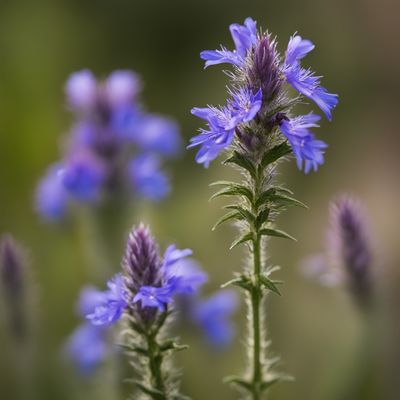
Ingredient
Borage seeds and similar-
The Nutritional Powerhouses: Borage Seeds and Similar
Borage seeds and similar ingredients are small, oval-shaped seeds that have a slightly nutty and cucumber-like flavor. They have a crunchy texture and are often used as a garnish or added to salads, soups, and baked goods. These seeds are rich in omega-6 fatty acids, antioxidants, and minerals, making them a nutritious addition to any diet.
Origins and history
Borage seeds have a long history of culinary use and are believed to have originated in the Mediterranean region. They have been used in traditional herbal medicine for their potential health benefits. Similarly, other similar seeds, such as flaxseeds and chia seeds, have been cultivated for centuries and have been an integral part of various cuisines around the world.
Nutritional information
Borage seeds and similar ingredients are rich in omega-6 fatty acids, which support heart health, and are also a good source of antioxidants and minerals like magnesium and zinc. They are low in calories and high in dietary fiber, making them a nutritious choice for maintaining a healthy diet.
Allergens
There are no known allergens associated with borage seeds and similar ingredients.
How to select
When selecting borage seeds and similar ingredients, look for packages that are tightly sealed and free from moisture or signs of damage. For other similar seeds like flaxseeds and chia seeds, opt for organic and non-GMO varieties whenever possible. Additionally, check the expiration date to ensure freshness.
Storage recommendations
To maintain the freshness and quality of borage seeds and similar ingredients, store them in an airtight container in a cool, dry place. Avoid exposure to heat, light, and moisture, as they can cause the seeds to spoil or lose their nutritional value.
How to produce
Borage seeds can be grown in a home garden by sowing the seeds in well-drained soil and providing adequate sunlight and water. Similarly, flaxseeds and chia seeds can be easily grown in containers or garden beds with proper care and maintenance.
Preparation tips
Borage seeds and similar ingredients can be used in a variety of ways. They can be sprinkled over salads, added to smoothies, or incorporated into baked goods like bread and muffins. They can also be ground into a powder and used as an egg substitute in vegan recipes. When using flaxseeds, it is recommended to grind them before consumption to enhance their digestibility and nutrient absorption. Chia seeds can be soaked in water or other liquids to create a gel-like consistency, which can be used as a binding agent in recipes or as a base for puddings and desserts.
Substitutions
Flaxseeds and chia seeds can be used as substitutes for borage seeds in most recipes. However, keep in mind that the flavor and texture may vary slightly. Flaxseeds can be used as an egg substitute in baking, while chia seeds can be used as a thickening agent in sauces and dressings.
Culinary uses
Borage seeds and similar ingredients are commonly used in salads, soups, stews, and baked goods. They are also popular in herbal teas and infusions. Additionally, flaxseeds and chia seeds are often used in vegan and gluten-free recipes as a substitute for eggs or as a binding agent.
Availability
Borage seeds are commonly available in Mediterranean and Middle Eastern cuisines. Flaxseeds and chia seeds are widely available in most grocery stores and supermarkets worldwide.
More ingredients from this category

Evening primrose seeds
The Golden Gems of Health and Beauty

Borage seeds
The Starry Herb: Borage Seeds

Perilla seeds
The Nutty Delight: Exploring the World of Perilla Seeds

Corn gromwell seeds
The Hidden Gems of Corn Gromwell

Honesty seeds
The Shimmering Gems

Purple viper's bugloss seeds
The Enigmatic Seeds of Purple Viper's Bugloss